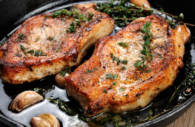
ONE simple trick allows you to eat rice – but with 50pc fewer calories
We love rice! After all, it's cheap, it's delicious and it goes with LOADS of different dips, sauces and dishes.
However, in particular with the white variety, sadly a lot of rice isn't really healthy. That's because even a modest serving has around 200 calories in it, and most of those calories come in the form of starch.

In our bodies, starch converts to sugar, and excess sugar converts to… yup, you guessed it, FAT!
Still, one undergraduate student at the College Of Chemical Sciences in Sri Lanka has now come up with simple way to reduce the number of calories in rice by up to 50 percent – AND the technique actually adds in further health benefits too.
So what does it involve?

"What we did is cook the rice as you normally do, but when the water is boiling, before adding the raw rice, we added coconut oil – about 3 percent of the weight of the rice you're going to cook," said Sudhair James, who presented his research at the National Meeting & Exposition Of The American Chemical Society earlier this week.
"After it was ready, we let it cool in the refrigerator for about 12 hours. That's it."

So how does it work? Well, not all starches are created equal, with digestible starches generally being worse for you than resistant starches. The latter take longer for your body to process and therefore aren't converted into glucose or glycogen in the same way as their digestible counterparts.
This, in short, means fewer calories. Hurrah!
And it is possible to change the makeup of a starch – which is what the coconut oil does to rice during the cooking process.

"The oil interacts with the starch in rice and changes its architecture," said Mr James. "Chilling the rice then helps foster the conversion of starches. The result is a healthier serving, even when you heat it back up."
The calorie reduction in the dishes he looked at ranged from 10 percent to 50 percent.
And people should be able to replicate the process at home, although Mr James warns the results might vary depending on the type of rice used.






